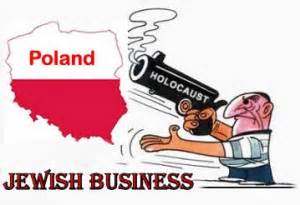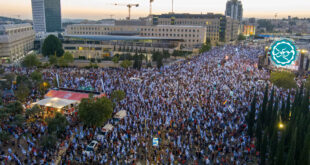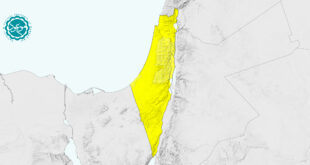The French Jew Claude Lanzmann is regarded as one of the most vehement promoters of the established ‘Holocaust’ story. He is perhaps best known as the director of the movie Shoa, a 91/2 hours’ marathon of taped interviews of Lanzmann with individuals who claim to have witnessed a broad variety of cruelties during the National Socialist persecution of the Jews. Not only does the sheer quantity of material compiled by Lanzmann have a tremendous psychological effect on many uncritical viewers, but also the highly suggestive techniques used by Lanzmann, which gives many viewers the impression they saw iron-clad proof for the claims made that were actually not delivered. Proud of his deceptive art of persuasion, Lanzmann told the New York Times, how one of his movie’s viewers went right into his mental trap: “There was one man who wrote to me after seeing the film saying it was the first time he had heard the cry of an infant inside the gas chamber. It was perhaps because his imagination had been put to work.” (10/201985, Sect 2, p. H-1). In order to unmask Lanzmann’s fraudulent methods, we present the analyses of three key witnesses that were interviewed by Lanzmann. After close examination, each one of them turns out to be untrustworthy, either due to their incredible claims or because the circumstances, Lanzmann’s admissions, or his witness’s later confession revealed that their interview was orchestrated.
________________________________________
About the Shoa-Interview with the alleged Treblinka SS-Man Franz Suchomel
SS-Unterscharführer Franz Suchomel is an important witness who is said to confirm the reality of mass gassings, in his case regarding the alleged extermination camp Treblinka. Claude Lanzmann, a French Jew and filmmaker, succeeded to get a 850,000$ subvention from the Israeli government in 1977[1] to produce a holocaust ‘documentary’ whose aim was mainly to convince skeptics in a period where revisionism had started to be a concern for some people. Subsequently, additional funds were provided by the French government and private sources. The film was finished only in 1985, 8 years later.
In the movie’s acknowledgment section, no word is uttered about the fact that it received massive funding from Israel. And what is even more revealing, no word is mentioned either that all the German witnesses that agreed to participate as witnesses in this movie received 3,000 DM, but had to agree not to reveal this fact for 30 years.[2] Thus, the German witnesses ‘testified’ for money.
The movie Shoah is terribly long (91/2 hours), something that can partially explain its success. One of the key testimonies used today is that of Franz Suchomel, a former SS guard, born in 1903, who had already spent a few years in jail a decade before. Due to his health condition it is probable that Suchomel died somewhere in the early 80’s.
Before discussing Suchomel’s testimony in detail, I will briefly review the extermination charges for Treblinka and the reasons that make such a story improbable.
In brief, the story is that between summer 1942 and summer 1943, some 800,000 mainly Polish Jews were deported to the Treblinka camp and vanished without a trace in the gas chambers over a period of 13 to 14 months. The bulk of them were allegedly killed prior to the spring of 1943 and buried in mass graves from August 1942 onward. In the spring of 1943, the corpses were excavated and burned on open fires in order to remove any trace of the crime, although gassing continued on a smaller scale. Treblinka was supposed to be a ‘pure’ extermination camp, which is why we wouldn’t expect post-war testimonies. However, the story offered is that an uprising took place at the end of the camp’s existence (August 1943), i.e., when most of the corpses were already destroyed, and that about 50 regular inmates succeeded to escape, which enabled them later to testify about the crime the Germans had try to cover.[3]Someone who reads the available Holocaust literature may think that the contradictions and inconsistencies are not exceeding the degree which one would expect from a witness whose memory unavoidably faded after so many years, but the actual literature is just presenting a sanitized version. Mark Weber and Andrew Allen,[4]ArnulfNeumaier,[5] and in particular Carlo Mattogno and Jürgen Graf[6] have presented a much more exhaustive and balanced review of the early testimonies, which are in fact much more contradictory, inconsistent, and outright impossible than they are usually presented in the mainstream literature.
The technical absurdity of the claim that Diesel exhaust gases were used as a poison gas for mass murder in Treblinka was best explained and refuted by Friedrich Paul Berg[7] and Walter Lüftl,[8].
Claude Lanzmann
The already mentioned study by ArnulfNeumaier also exposes in detail the difficulties and absurdities associated with the cremation of bodies on open fires and the claimed size of the required mass graves according to the stories told by the ‘survivors.’ I will comment here only the weirdest aspect concerning Herbert Floss, this specialist who allegedly came from Germany to advise camp commander Stangl on the best way to burn corpses ‘economically:’ According to testimonies, the key for a successful incineration almost without or with very little fuel was allegedly to use the corpses of women, who were said to have burned all by themselves, to ignite the corpses of children, elderly people, and men stacked on top of those female corpses. Certified engineer A. Neumaier shows in detail the absurdity and technical impossibility of the mass cremation scenarios described by the witnesses. This fishy story was perhaps invented to circumvent the problem that no records exist at all which would prove the shipment of large quantities of fuel to Treblinka over the years 1942-1943. But I won’t go into details here.
It is well known that many atrocity stories circulated about Treblinka during the alleged event and that both the Polish and the Jewish resistance diffused actively those claims. We know also from the author Yuri Suhl,[9] that in “nearly each ghetto and each camp” there were Jewish cells of resistance, and that “thousands of Jewish fighters were hiding in the Polish forest to harass the Germans,” attacking munitions convoys, German soldiers, etc.[10] Today, some Jewish organizations accuse the Poles for their failure to attack Treblinka during the war, but even the Jewish partisans did neither consider it necessary to attack Treblinka’s weak garrison nor to dynamite the railroad system that was leading to it.
Neither the Polish resistance nor the Jewish resistance tried to take photos of the huge amount of corpses dragged out of the gas chambers or burned in the open during those months. It is claimed that the inner fence was kept covered with tree branches to conceal the activities within, but Treblinka was partly surrounded by trees. Climbing on one of these with a zoom lens was thus possible. The resistance knew that a photo of mass graves or burning pyres, with recognizable features like wire fences, buildings, and SS guards was priceless if they wanted to back their charge. They had one year to do it, but did not do anything. Even the photo album of former camp commander Kurt Franz is useless in this case.
Alleged mass grave in Treblinka with several corpses: The only forensic “evidence” for the murder of 800,000 humans![11]
It is claimed that the communists discovered seven meters high heaps of human ashes and bones covering a large area when they reached the camp, but they didn’t consider it necessary to invite neutral representatives from the Red Cross to back their charge as the Germans did in Katyn. Some isolated human remains were indeed found and photographed, but we shouldn’t be surprised about this considering that hundreds or even thousands of Jews certainly perished during their transport.
Let me now go back to Shoah. In the sequence discussed here, we have this man, whether it is Suchomel or not, who gives an interview in his apartment. A map of Treblinka is displayed a few meters away from him and he often uses a stick to point at locations during his description. The interview is conducted in such a way that one could consider Suchomel as a nice guy, human, who was led into a nightmare that he never wished.
Lanzmann explained in the New York Times, October 20, 1985, page H-17, how he succeeded to film Suchomel: his female assistant was carrying a bag in which a camera was hidden. A little hole allowed the camera to record those sequences. Occasionally a mini van was brought to the front of the building, where technicians were watching on their monitor the images which are normally retransmitted in real time.
If one places oneself in the shoes of the assistant, it is obviously necessary to be careful since such an interview is a unique chance. Someone who is taking those pictures should certainly bear in the mind that each gesture is important and that the man must not suspect anything. There is no second chance. It must also be expected that the pictures recorded by a camera hidden in a bag will sometimes be blurred and out of focus, which would not always show what is important, since it is almost impossible to aim properly with such a camera. However, if one puts down the bag with the camera, the resulting picture is necessarily inflexible, always showing the same focus.[12]And indeed: The quality of these sequences is extremely poor, although one can recognize roughly a face in spite of the blurred aspect. In contrast to that, Schalling’s figure is pretty clear when he is interviewed under similar conditions later in the movie (Schalling is another former National Socialist interviewed by Lanzmann, although he is not supposed to have been involved in Treblinka.[13])
At the beginning of the interview, Suchomel is asking not to reveal his name, so he is not supposed to be aware that a camera is used. However, already the subsequent exchange of words is strange:[14]“Lanzmann (interviewer): Are we ready?
Suchomel: Yes. We can begin.”
Peculiarities
Suchomel’s statement has two claims in particular which render the entire testimony very suspicious:
1. In one scene he reports-in contrast to all other witnesses-that the Germans had to remove the corpses in Treblinka all by themselves:[15]“No one wanted to clean it out[the rotting heaps of corpses]. The Jews preferred to be shot rather than work there. […]So Wirth went there himself with a few Germans and had long belts rigged up that were wrapped around the dead torsos to pull them. […] they themselves helped with the cleanup. Lanzmann: Which Germans did that?Suchomel: Some of our guards who were assigned up there.Lanzmann: The Germans themselves?Suchomel: They had to.Lanzmann: They were in command!Suchomel: They were in command, but they were also commanded.Lanzmann: I think the Jews did it.Suchomel: In that case, the Germans had to lend a hand.”
2. And of course, in Suchomel’s account as well, those victims led to the smoking and stinking burning pits, where an uninterrupted shooting is going on, noticed nothing unless they actually stood at the very edge of the burning pits; and in Suchomel’s story as well, the corpses burned almost without any fuel:[16]“Suchomel: […] Until they reached the end, they saw nothing. Then they’d see the dead in the pit. They were forced to strip, to sit on a sandbank, and were killed with a shot in the neck. They fell into the pit. There was always a fire in the pit. With rubbish, paper and gasoline, people burn very well.”
If Lanzmann wanted to create the impression that his interview with Suchomel was not being taped, why then such a strange question at the very beginning of the interview? Ready for what? Formless chats do not have an official beginning! Since I must assume that most readers have not seen the movie, I will analyze in more detail what happened during this interview. For those who want to check it out, since literal statements are less strong than real images: Suchomel’s interview is located on the second cassette of the Shoahseries.
During an important portion of the interview, the camera is at the same level as Lanzmann’s shoulders. We see it when Lanzmann raise his hand with a cigarette very close to the lens. However, the image is not even shaking lightly during the interview, as one would expect if a person is holding the bag. That the bag is moved around at least once in a while is evident because this interview consists of different camera focuses. At one point, we have a closer picture, where the man (Suchomel?) is looking directly into the camera, fixating it during a long period of time while talking. The question is, of course: why does he look at a totally unimportant bag?
Several times the man who is filmed will take his stick to describe a location on the map. At this moment we have a very close-up view of the map, from 30 or 40 centimeters, and when the camera turns back to the man’s face, we know that this was not due to a later enlargement. But before that, when the tip of the stick moves up and down or in diagonal to show some elements on the map, the camera follows carefully the movement from a very short distance to catch the wand. Vertically, horizontally, in diagonal. This happens about 12 minutes after the beginning of the interview and lasts about 12 or 13 seconds. Following the movement of the wand from such a distance to catch a minor detail is evidently useless and more than risky and revealing for somebody who is trying to hide a camera in a bag. But such a scene happens several times during the interview, each time he uses his stick, the camera is getting very close to the map, following each movement of the stick, even in diagonal. Then it turns back to his face when he goes back to his chair. But it misses the head a little bit for 1 or 2 seconds: a bit too high, too much to the left, from a distance of a few meters. But the camera turns immediately to catch most of his face correctly for the rest of the interview, and this several times. I imagine that some people have a third eye.
The first time that I saw Suchomel’s interview I was struck by this, thus I replayed the same scenes perhaps two dozen times, each time with a bag near me. Each time I tried to imagine how I should handle the bag without raising Suchomel’s suspicion and how the man in front of me could be blind enough not to discover that something very odd was happening. After 20 or 25 times perhaps I gave up.
Claude Lanzmann seems to be dishonest. Either regarding his claim that the interview was taped with a camera hidden in the bag of his assistant and without the knowledge of the interviewed man, or regarding his claim that the interviewed man was Suchomel-or regarding both claims.
________________________________________
[1]The Jewish Journal, New York, June 27, 1986, p. 3, and the Jewish Telegraph Agency, June 20, 1986.
[2]“Ceque je n’ai pas ditdansShoah,” VSD, interview by Jean-Pierre Chabrol, July 9, 1987, especially p. 11; this information was first discovered and published by Robert Faurisson, Journal of Historical Review, 8(1) (1988), pp. 85-92, here p. 87.
[3]First published in German in VierteljahresheftefürfreieGeschichtsforschung 4(2) (2000), pp. 168f.
[4]The most frequently quoted mainstream books on Treblinka are probably: Yitzhak Arad, Belzec,Sobibor,Treblinka. The Operation Reinhard Death Camps,Indiana University Press, Bloomington and Indianapolis 1987; Alexander Donat (ed.), The Death Camp Treblinka,Holocaust Library, New York 1979.
[5]Weber, Mark, Andrew Allen, “Treblinka”, in: Journal of Historical Review, 12(2) (1992), pp. 133-158.
[6]“The Treblinka Holocaust”, in: Ernst Gauss (ed.), Dissecting the Holocaust, The Growing Critique of „Truth” and „Memory”, Theses & Dissertation Press, Capshaw, AL, 2000, S. 467-495.
[7]Treblinka. VernichtungslageroderDurchgangslager?, Castle Hill Publishers, Hastings 2002.
[8]Friedrich P. Berg, “The Diesel Gas Chambers: Ideal for Torture – Absurd for Murder”, in op. cit. (note ), pp. 435-465.
[9]W. Lüftl, “SollenLügenkünftigPflichtsein?”,Deutschland in Geschichte und Gegenwart 41(1) (1993), pp. 13f. At the time this paper was written, Walter Lüftl was President of the Austrian Association of Civil Engineers.
[10]Yuri Suhl, The story of the Jewish resistance in Nazi Europe, Anthology on Armed Jewish Resistance(1939-1945), Vol. 4, 1984, pp. 73ff.
[11]Ibid., p. 75, and Vol. 2, p. 48 and 609.
[12]From Yitzhak Arad (ed.), The Pictorial History of the Holocaust, Macmillan, New York 1990, p. 299, www.fmv.ulg.ac.be/schmitz/Holocaust/trebln01.html.
[13]With today’s technology, almost anything could be remote controlled, but back in the late 70s and early 80s, cameras and remote controls were rather big and clumsy and not easily available!
[14]Schalling testified about the alleged use of the so-called gas wagons close to the camp Chelmo.
[15]Ibid., p. 52.
[16]This was taken from the book Claude Lanzmann, Shoah: An Oral History of the Holocaust, Pantheon Books, New York 1985 pp. 56f.
[17]Ibid., p. 63.
________________________________________
 Mouood Mouood English Edition
Mouood Mouood English Edition




